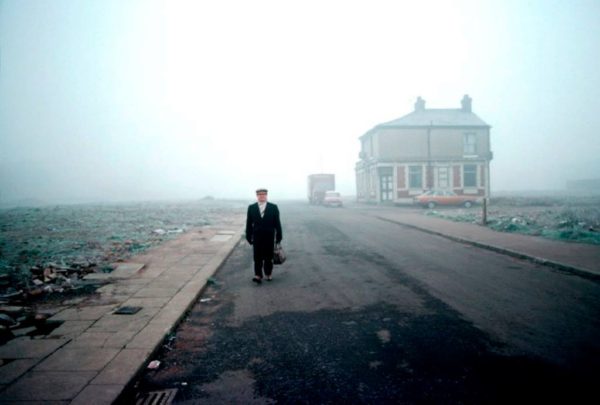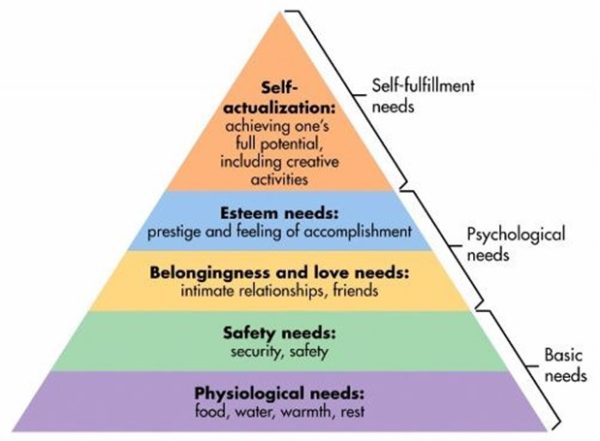The Fountain of Human Success or Failure
Finding the fountain of truth, or the Holy Grail or the Tree of Wisdom has been a human pursuit for a while now. This pursuit is flawed in the sense that gold has similar characteristics to fool’s gold which is often found in the same place.
A singular pursuit for “only” gold can therefore end up in failure despite good intentions. You have to be aware of the presence of fool’s gold too, because that would be a success in itself, despite being a failure relative to gold.
The positivist will stubbornly pursue a foolhardy quest to save the world and will be very disappointed when his horse breaks a leg. On the other hand, the arrogant pursuit of what one believes to be his entitlement is also destined to end in failure.
The fact of the matter is that success is available, visible and achievable despite the real and abundant opposition to it. Think about competition, the crab effect and parasitism and it is no wonder that success is in short supply and failure so easy to achieve.
One example of this is described by Jim Collins where he assessed more than 20,000 listed companies in order to identify only eleven successful feel-good stories. It is therefore difficult to believe that success and failure emerges from the same fountain. This is not about “hoping” or “thinking” to be successful, it is about actual success or failure. However, it is not binary either, there are grades of success or failure too, but it suffices for the sake of argument to estimate that the choice itself is binary with the outcome less so.
Therefore, one makes a choice and then manages the risk towards that selected choice. There is no other way to success. For example, should one desire a child the decision is fairly binary, but getting that baby delivered safe and sound requires a number of very serious hurdles. In fact, it’s quite an industry with insurance cover, labor law etc. and depending on boy or girl, sick or healthy, there is an entire world waiting (in anticipation) for that baby.
But, getting back to the fountain of success and failure I have to first refer to Maslow’s hierarchy of human potential. This is a simplistic reference and will undoubtedly require further investigation by experts in the field. However, it looks like this:
What Maslow found apparently was that some individuals were only motivated by their basic needs while others found self-actualization attractive. It is possible that an entire group of individuals share a potential for basic needs and likewise for self-actualization. It is therefore possible to imagine that a change-over in group potential happens in the area depicted as psychological needs. The assumption is that there are no other groups. In other words, one group is working its way up, while another group is working its way down ending up with both groups meeting in the middle, as it were.
It must be recognized that when Maslow defined this pyramid, he did not envision a group “working downwards,” but actually that everybody (and each) working their way upwards with some going further than others. However, when he sampled students for this study, they were already distributed in this fashion. So, it’s not just a question of getting wiser as you get older.
For example; a group that might have a strong(er) potential for “belongingness and love needs” could be collective societies whereas a more individualist societal group would exhibit a “need for Esteem.” There is no right or wrong here although it would be easy to start the accusation trade of insults at this point. Remember that it is a question of graded “chance” slowly changing in perhaps a linear fashion across both psychological needs as identified above.
Unfortunately, Maslow did not do an intelligence correlation as far as I can tell at this stage; however, what he did may help further investigation. In addition, self-actualization points towards people with emotional intelligence without guilt or shame. The group populating the self-actualization need category must be relatively small when compared to the basic need category. Although a limited number of people are born into the self-actualization group, most people (like myself) will have to slog their way ever upwards.
The last point concering single humans (which is what the pyramid refers to) is that it is fairly obvious that the basic needs individual will be a lot more focused on his safety than the self-actualization individual. One example is that collectivist societies exist precisely to “save the hive” (r-selection etc.). Another example is that the Mensa organization describes their participants as “dependents” meaning they require general support and not just to fix their washing machines, but to protect them. I can well imagine me and my entire family being quite defenseless while in a “heightened state of self-awareness.”
The next stage of this discussion starts by pointing out the risk of improving oneself. Let us assume that I have a basic need to survive as it were. That means I need food and water and while sleeping, some safety too. In fact, I will also need to be very aware of my safety while searching for water and food. Typically this sort of potential is quite an achievement and those people capable of doing it are sometimes called loners while staying on mountain slopes.
However, imagine you are a mountain lion when suddenly one day, you get that smell of a female lion. That will trigger those survival genes because unbeknownst to the lion, his genes know that his own survival improves with a family around him. The female genes know exactly the same thing hence a family is born. What really happened though, is that the individual risk for each member of the family has been reduced, causing them to have a better life expectancy. In other words, by moving into Maslow’s “belongingness and love needs” category the family exhibits a better potential not only to survive but to develop those tools only available to a group. In fact, those tools a single lion never would have had.
The important point here is that the lion is already programmed for group behavior. The same applies to humans. We are actually organized already without knowing it and although physically independent we remain psychologically dependent. In fact it takes effort “not” to mix with family, friends, colleagues and even strangers. Unfortunately in the case of humans, there is no natural organization beyond the natural family of which monarchy may perhaps be seen as an extension.
This is the point where organizations must be incorporated in Maslow’s Hierarchy of Needs. Recent studies show that organizations exhibit (on their own) similar traits as humans. Therefore an organization can also be categorized as “basic” (such as a school) or as having “esteem” (such as a professional society). Therefore organizations can also grow and improve themselves by learning and becoming wiser.
The above is the upside. The downside is where (most) humans decide not to improve, either voluntary (such as a hermit) or involuntary (such as someone caught up in a collective group). That also applies to organizations. Therefore, the deduction is that a single person cannot improve “itself” without an accompanying organizational change.
To reiterate: humans can only improve if their organization allows it.
The lion improved his life expectancy by taking on additional responsibility i.e. responsibility for himself as well as responsibility to his group. However, overall the risk is less, despite the added responsibilities. In fact one can say that the total responsibility is less although it is different when compared to being single. The real reason therefore, why emotional intelligence was identified, is because the individual will have to be able to adapt to something different in order to grow his potential.
The same fountain of hope can also be a fountain of despair because the individual or organization may not be able to adapt, in fact even refuse to adapt to grow its potential. This is quite natural and these people and organizations must be allowed to state that desire (Amish).
A test for the above hypothesis is to apply it to Western Civilization. In short it is an Individualist society that aspired to improve its esteem by colonizing the world. However, as they improved their potential they lost the capability to keep themselves safe. This opened the door to migrants and subsequent mayhem because the migrants do not care for esteem.
The mistake in Western Civilization is that it did not cover the loss of safety as individuals and organizations improved their potential. This new level of safety is not just more safety, but “different.” The benefit was accrued, but the organization never adapted to implement the “different” safety required by that improvement. Hence society improved to a point after which it was dragged back down, as is now evident in worldwide fatality increases and general loss of vision which previously equated to a Type 1 civilization.
This also goes some way to identify the mechanism that initiates societal entropy that previous civilizations missed. The human-organizational dependency was never explored and it would be a good time to start now.
Tags: civilization, civilization design, dark organization, entropy, group behavior, Maslow's hierarchy of human potential dark organizations, morality











